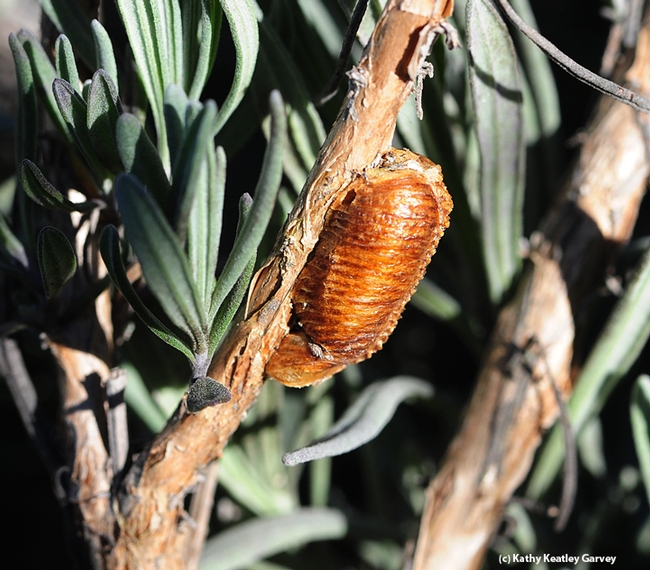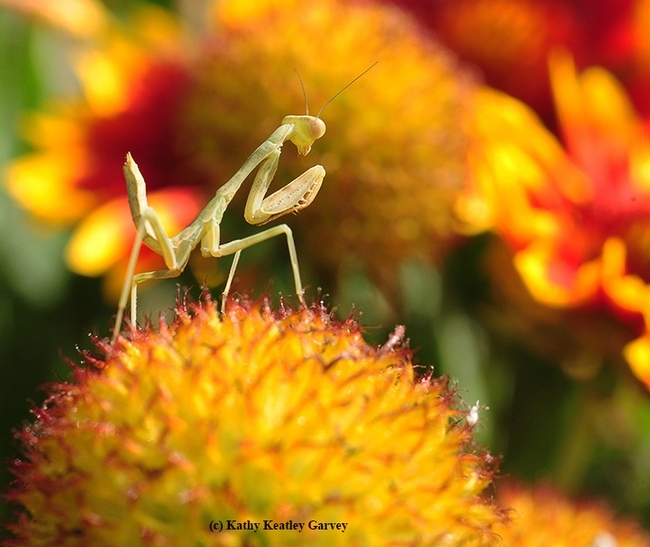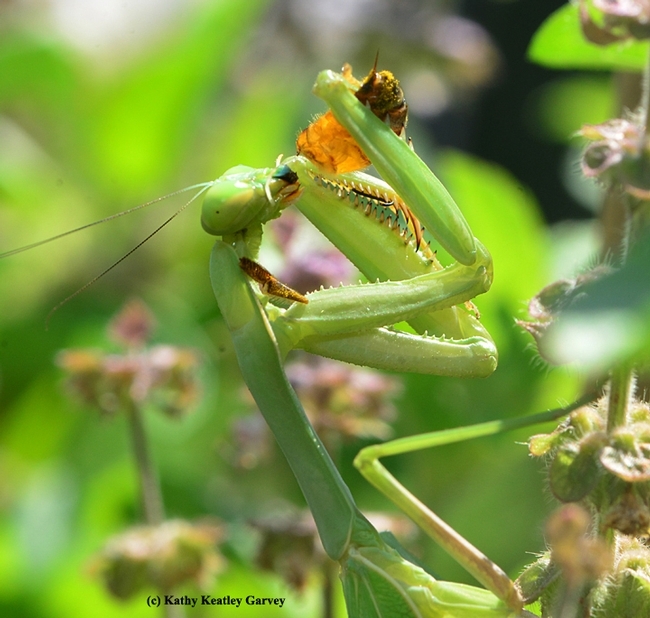Any day's a good day when you find the ootheca (egg case) of a praying mantis in your yard. It's much better than finding an Easter egg.
Ootheca comes from the Greek word "oo," meaning egg and the Latin word, "theca," meaning a cover or container.
A few weeks ago, we spotted an ootheca (below) on our lavender bush. It's sturdily attached to a stem about a foot off the ground. Note the small hole on the right near the top, the exit hole of a parasitoid, perhaps a wasp or fly, according to Lynn Kimsey, director of the Bohart Museum of Entomology and professor of entomology at UC Davis.
We're not counting our eggs until they hatch but we saw another ootheca on our lantana. And another one on a thin branch of an olive tree. Mama Mantis knows the best spots.
When springlike temperatures greet us, we expect some 100 to 200 praying mantids to hatch or emerge from each egg case. The nymphs will be hungry and will eat everything in sight, including their siblings. They do that, you know. No love lost. No brotherly love or sisterly love here. Bon appétit!
Then the young mantids will nab a few aphids and flies and other small critters until they are able to ambush and snag much larger prey, including honey bees, sweat bees, bumble bees, syprhid flies, and butterflies. And sometimes, a hummingbird...
If you see them hanging around your hummingbird feeder, they're not there for the sugar. They're not vegetarians; they're carnivores.
Attached Images:

The egg case or ootheca of a praying mantis, is attached to the stem of a lavender plant. Note the small hole on the left, near the top--the exit hole of a parasitoid, according to Lynn Kimsey, director of the Bohart Museum of Entomology at UC Davis. (Photo by Kathy Keatley Garvey)

A young praying mantis searching for prey on a blanket flower, Gallardia. (Photo by Kathy Keatley Garvey)

A praying mantis dining on a honey bee. (Photo by Kathy Keatley Garvey)